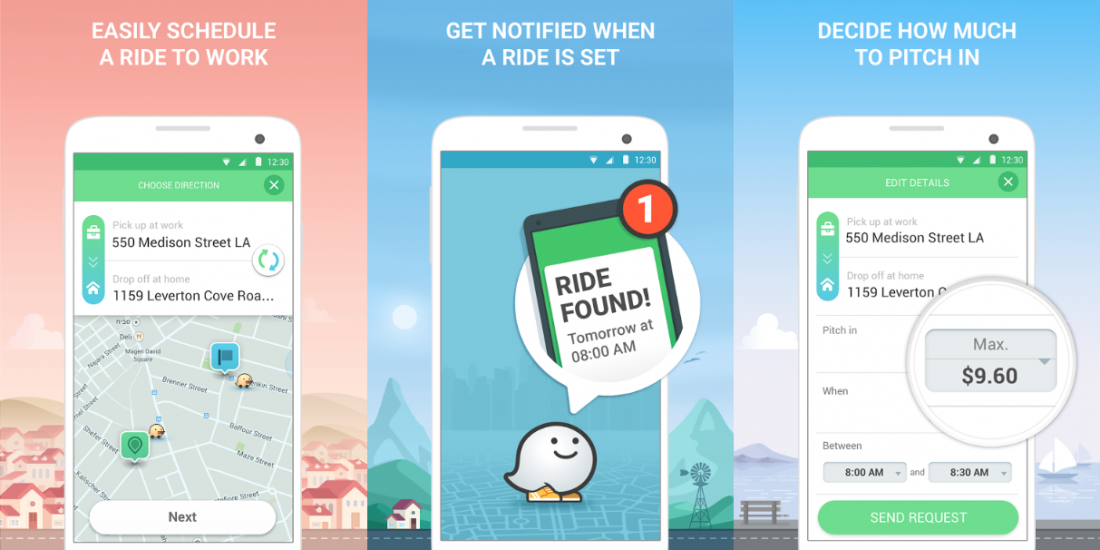Following a successful trial run in Israel and San Francisco, Google is expanding Waze's ride sharing program to several U.S. and Latin American cities over the next few months. The service competes with Uber's UberPool and Lyft's Line services, but with some key differences in the business model.
While the aforementioned Uber and Lyft services are basically swapouts for taxis that let you split the cost of your trip with another rider headed in the same direction, Google said it intends to have the Waze app match drivers and riders who are already looking to move in the same direction. In that regard the service is closer to something like BlaBlaCar, but whereas the latter is aimed at longer trips, Waze's ride sharing program seems more oriented --- but not necessarily limited to --- getting around within your area.
The driver is only reimbursed for mileage driven at a maximum of 54 cents per mile --- Google says it doesn't believe drivers need to report any payment as income because it is considered gas money. A ride from downtown Oakland to downtown San Francisco, for example, would cost a mere $4.50, whereas the same trip using either UberPool or Lyft Line is around $10 to $13.
The downside to the approach is that since drivers won't be using Waze ride sharing as their main source of income, the service is expected to have a less consistent base of drivers, and users will need to book riders further in advance compared to booking it on-demand with Lyft or Uber. "Can we get the average person on his way to work to pick someone up and drop them off once in a while? That's the biggest challenge," Waze CEO Noah Bardim said in an interview with the Wall Street Journal.
Waze has not yet announced which cities will be getting access to the feature and when.
